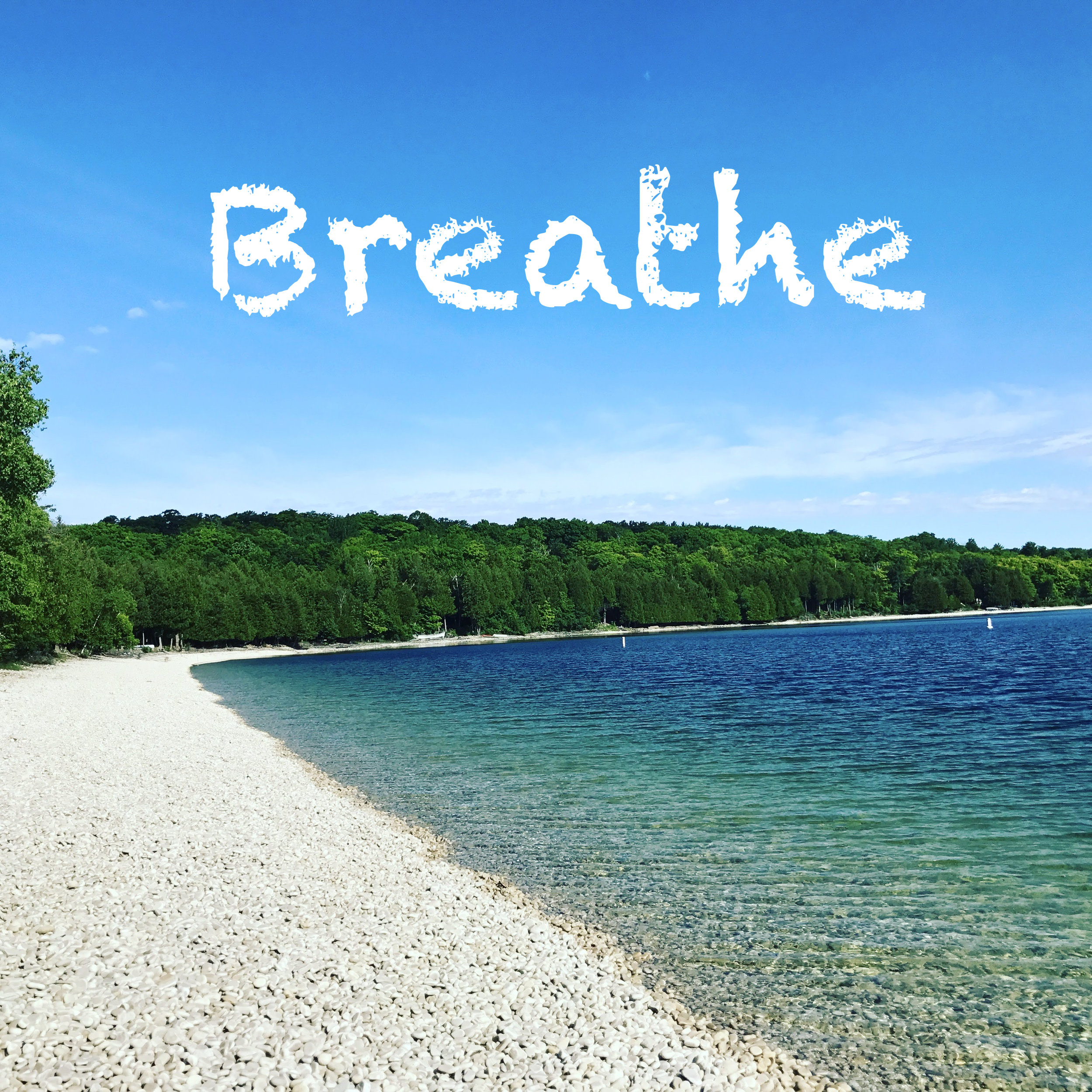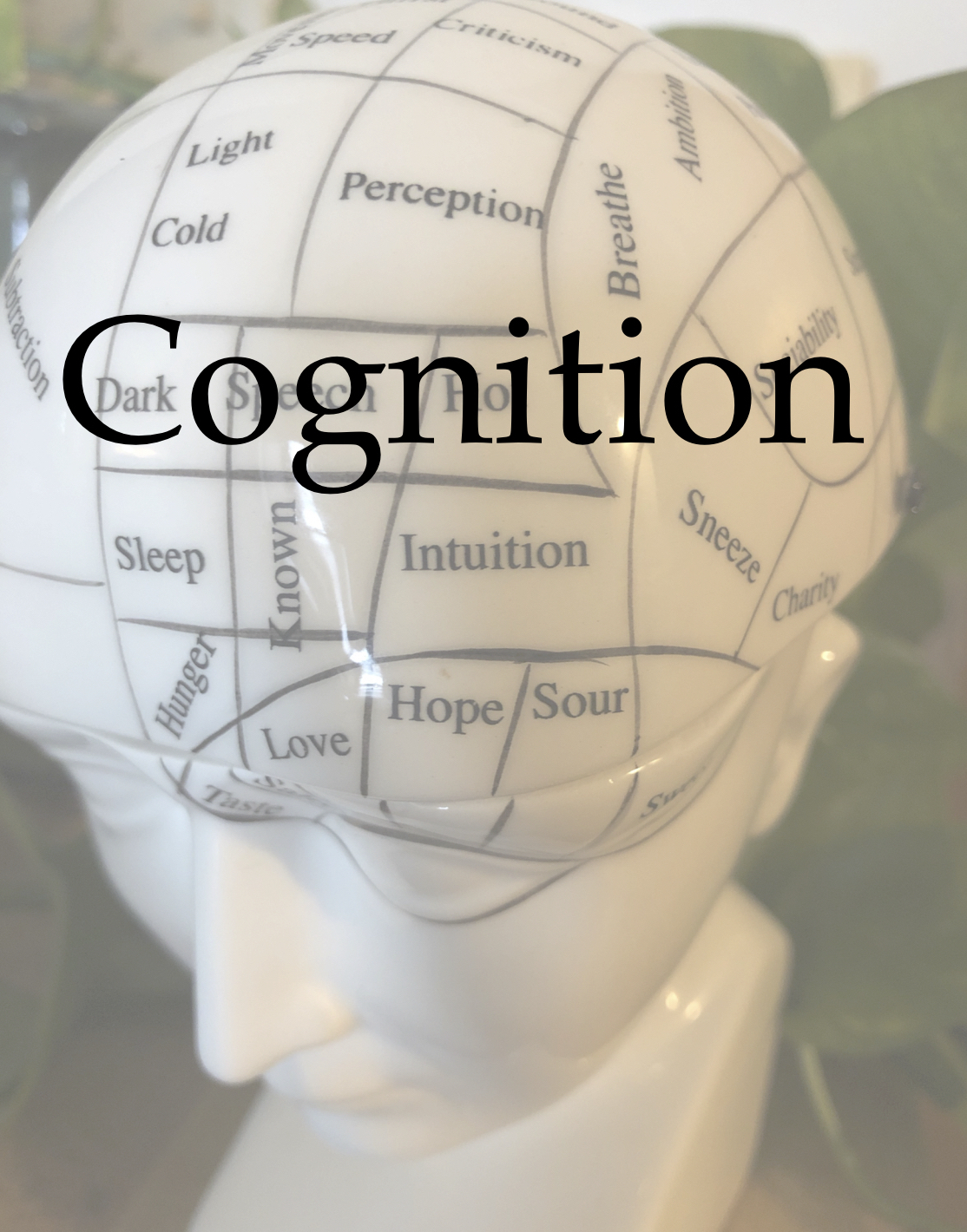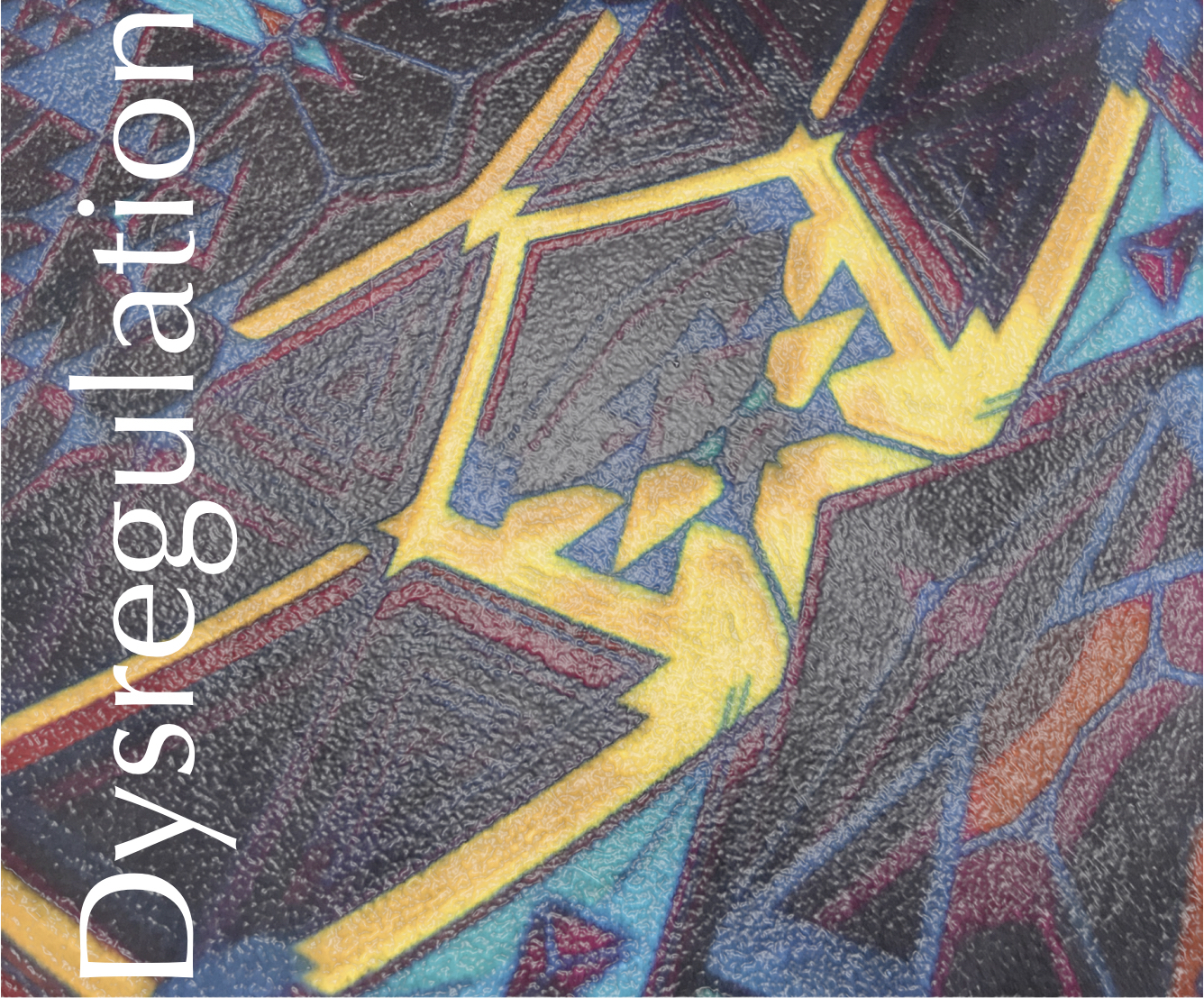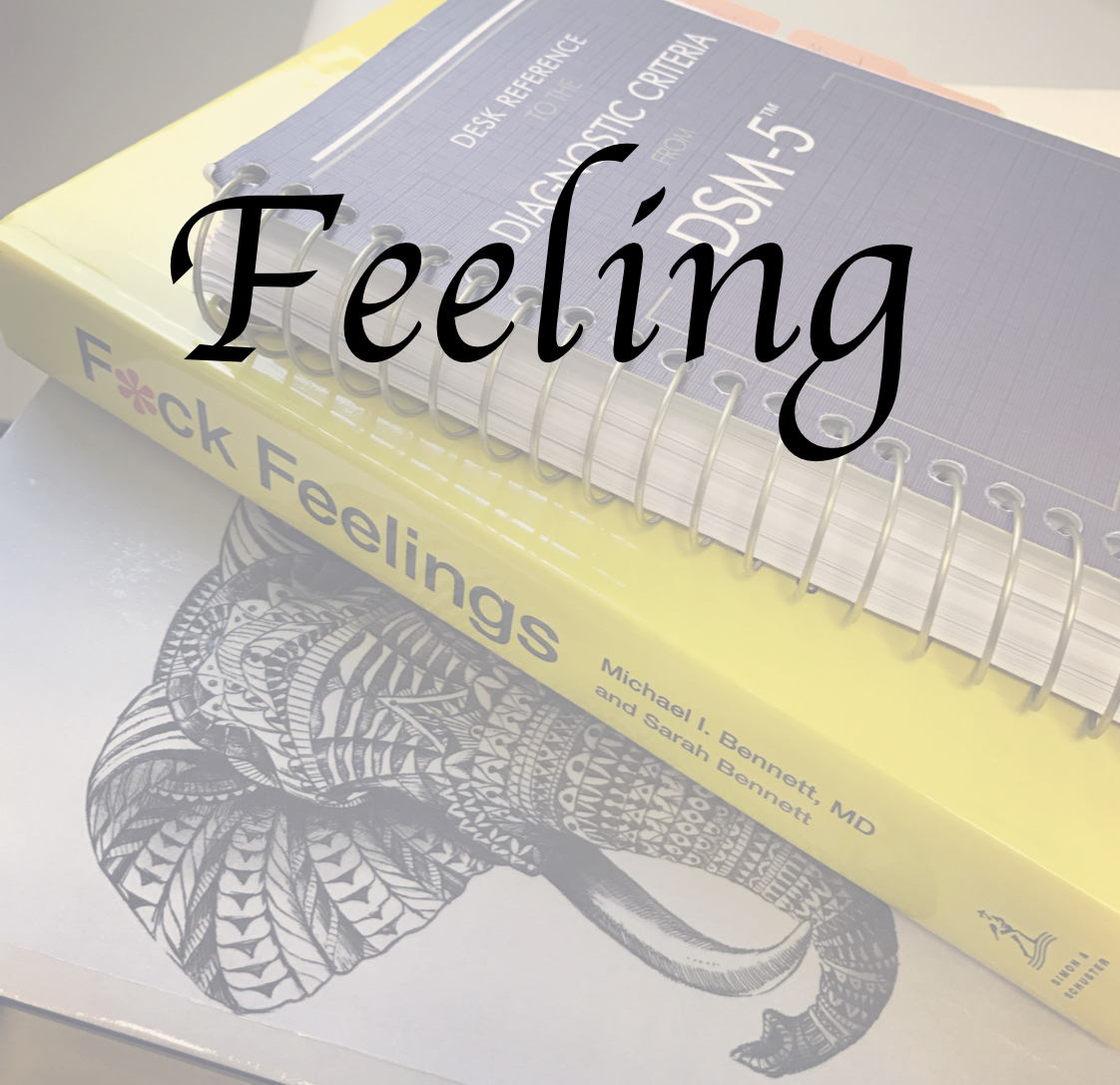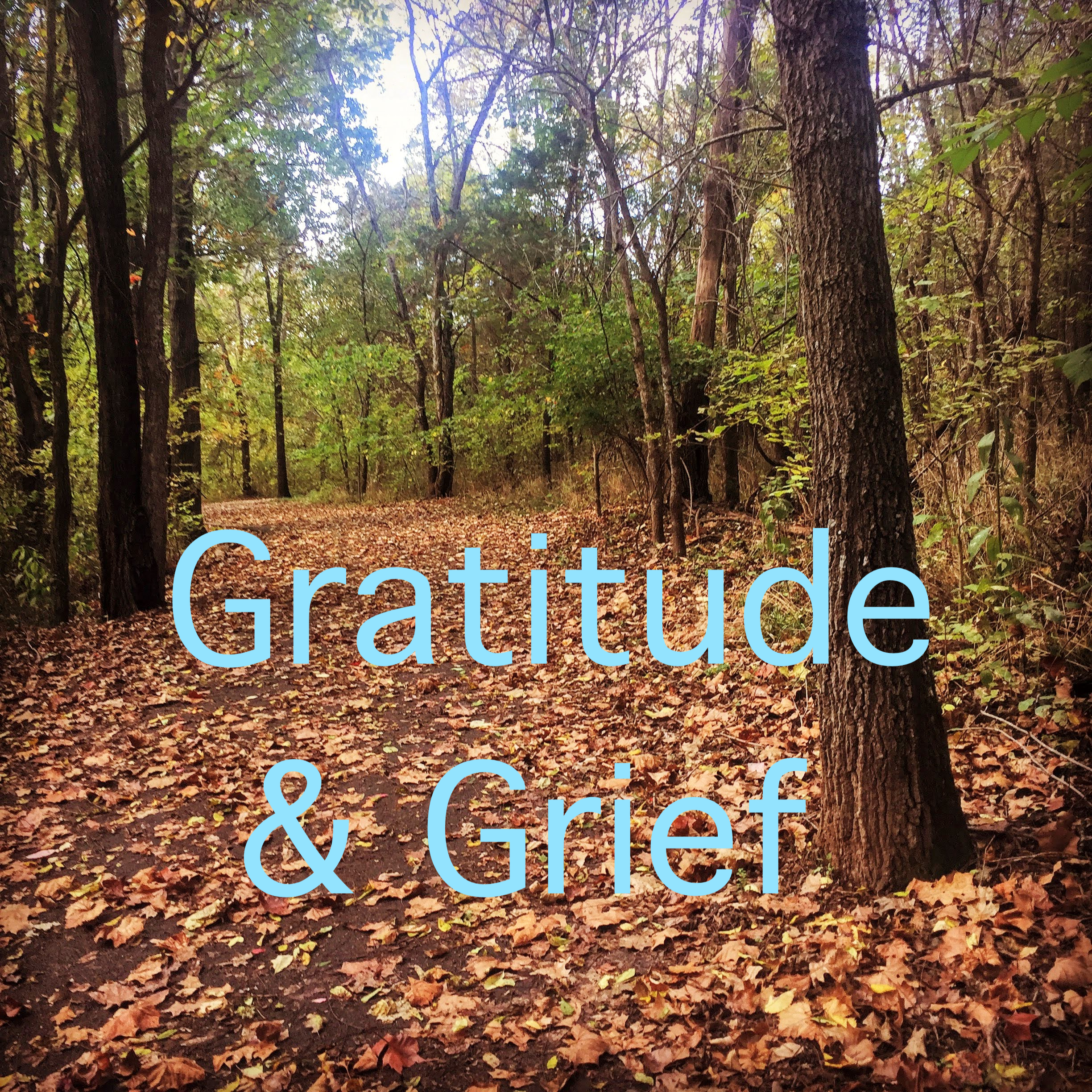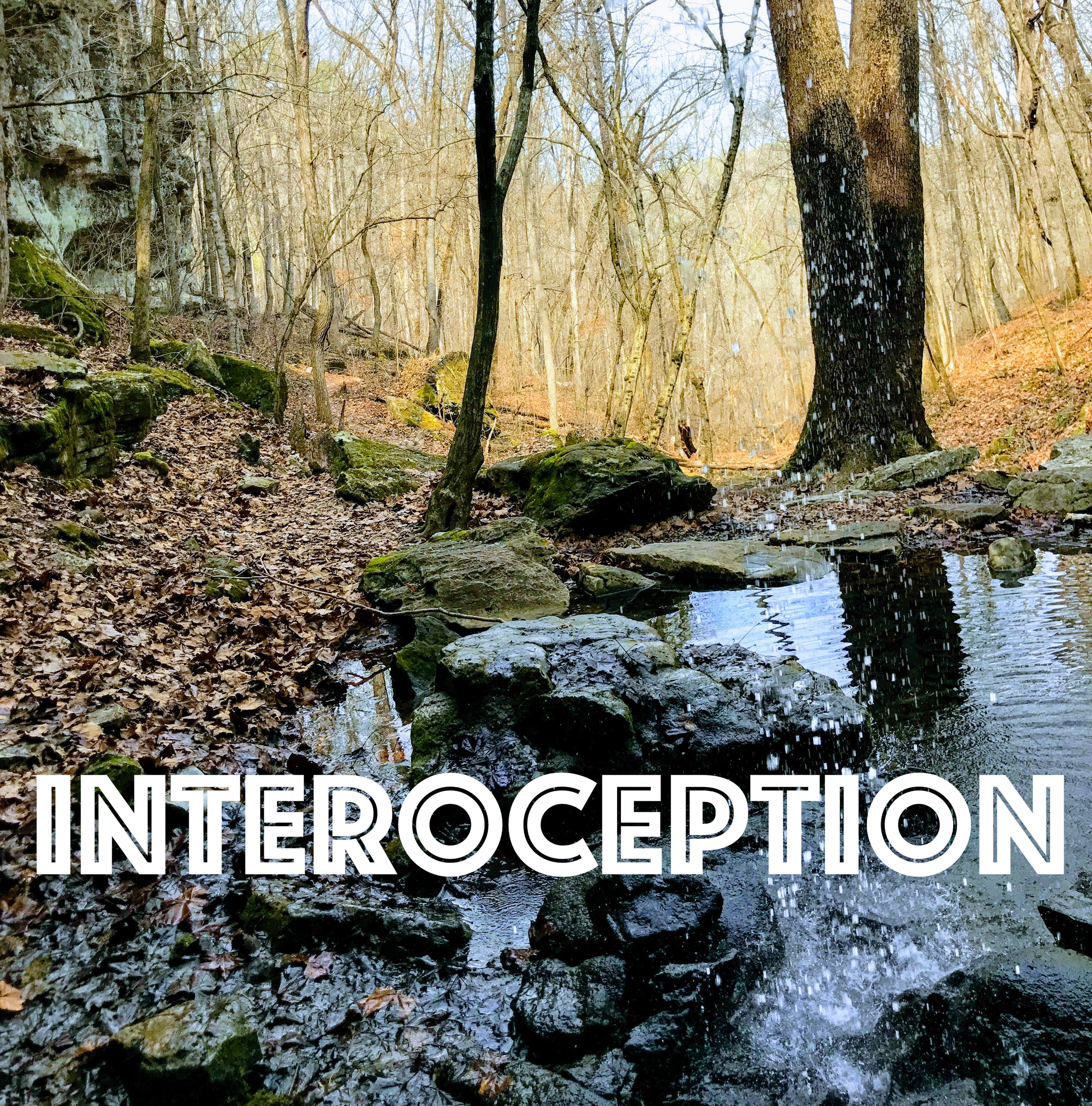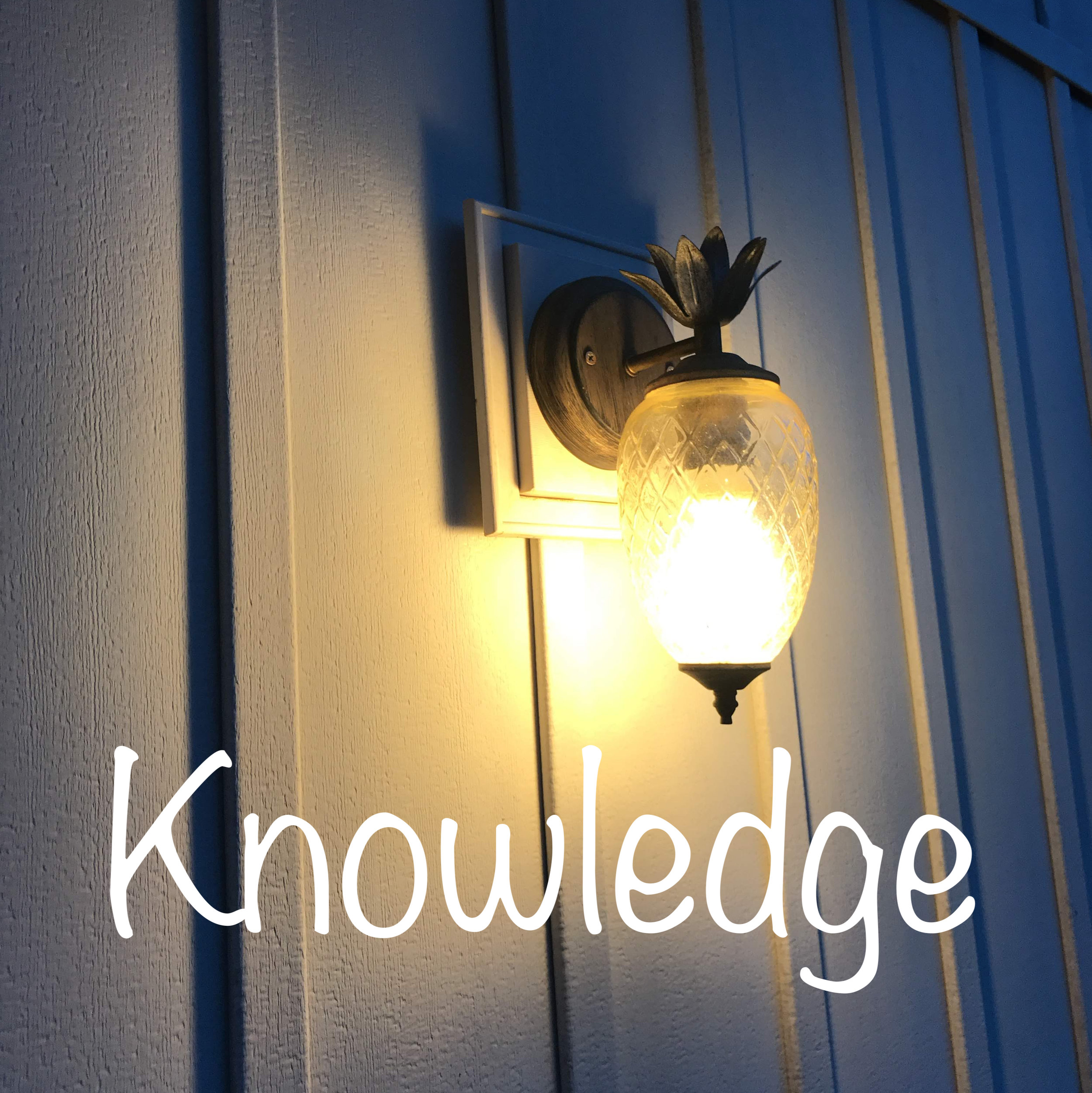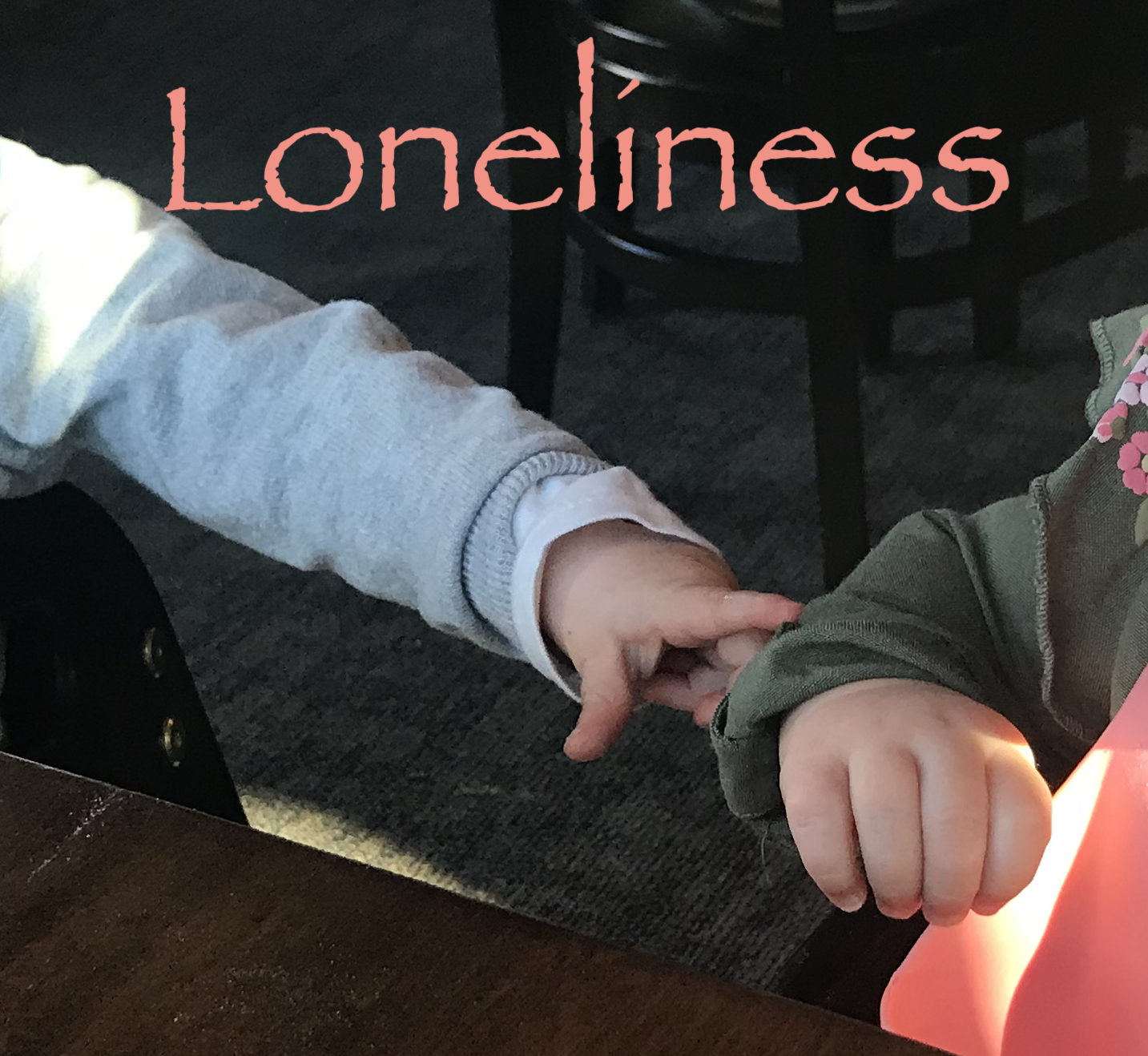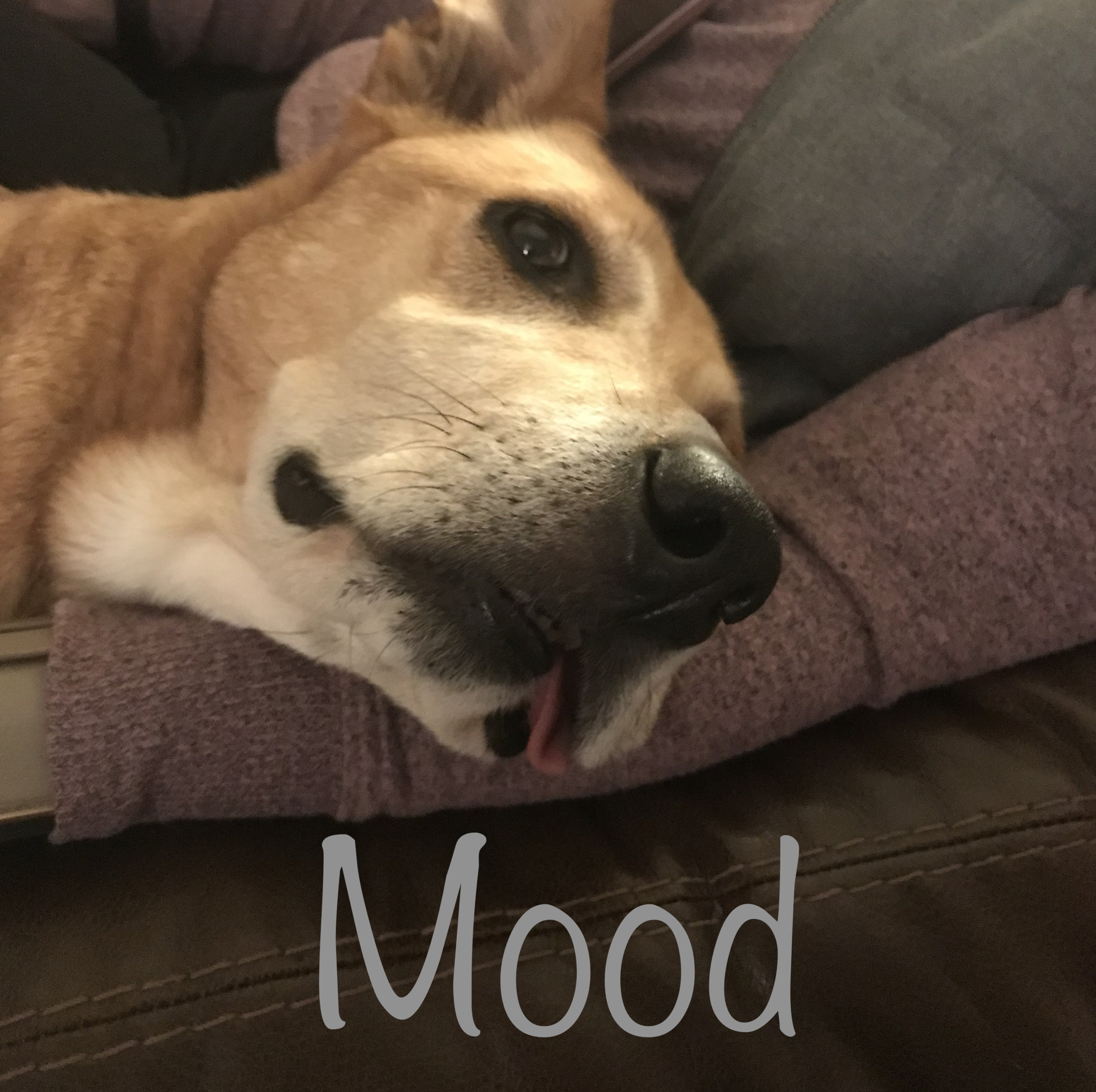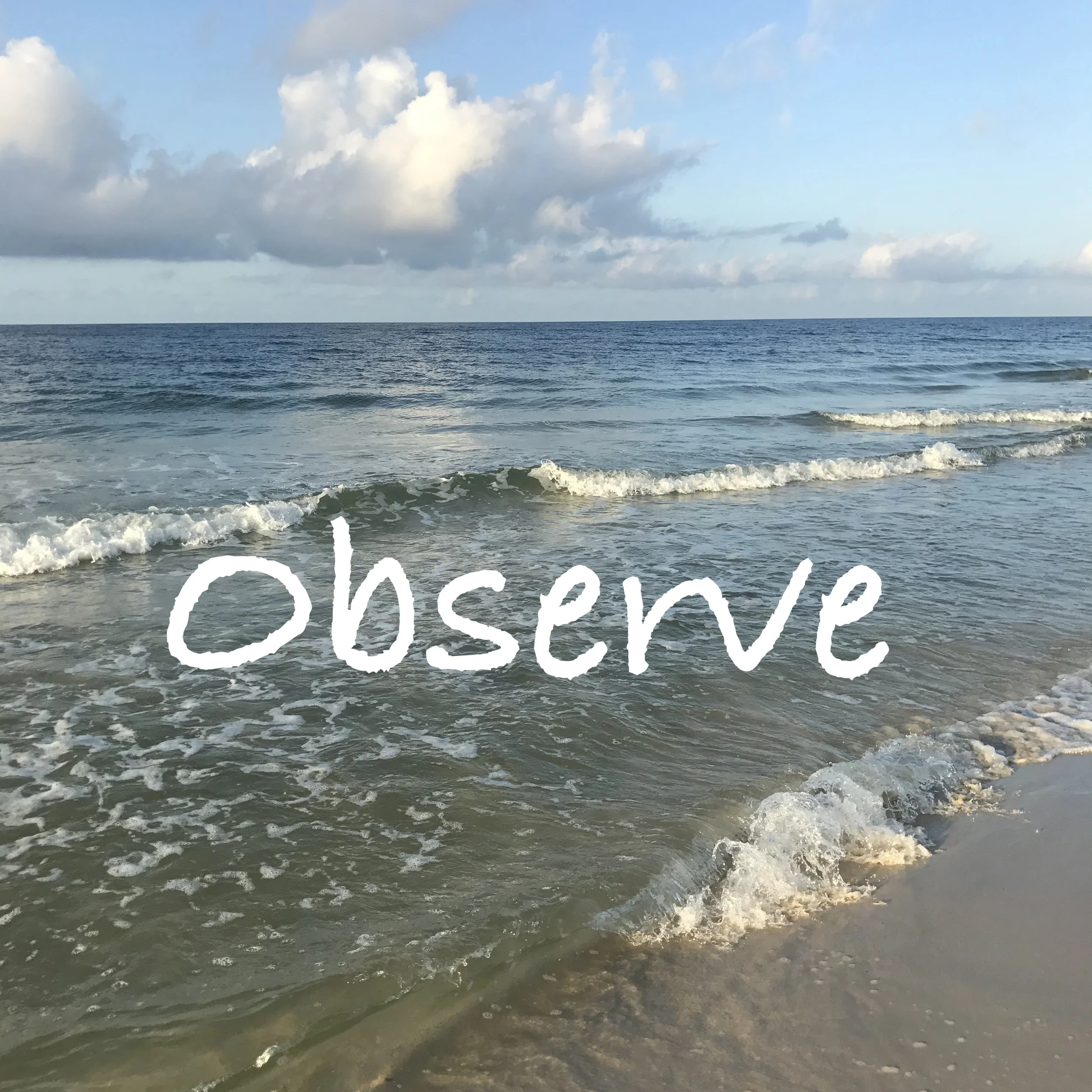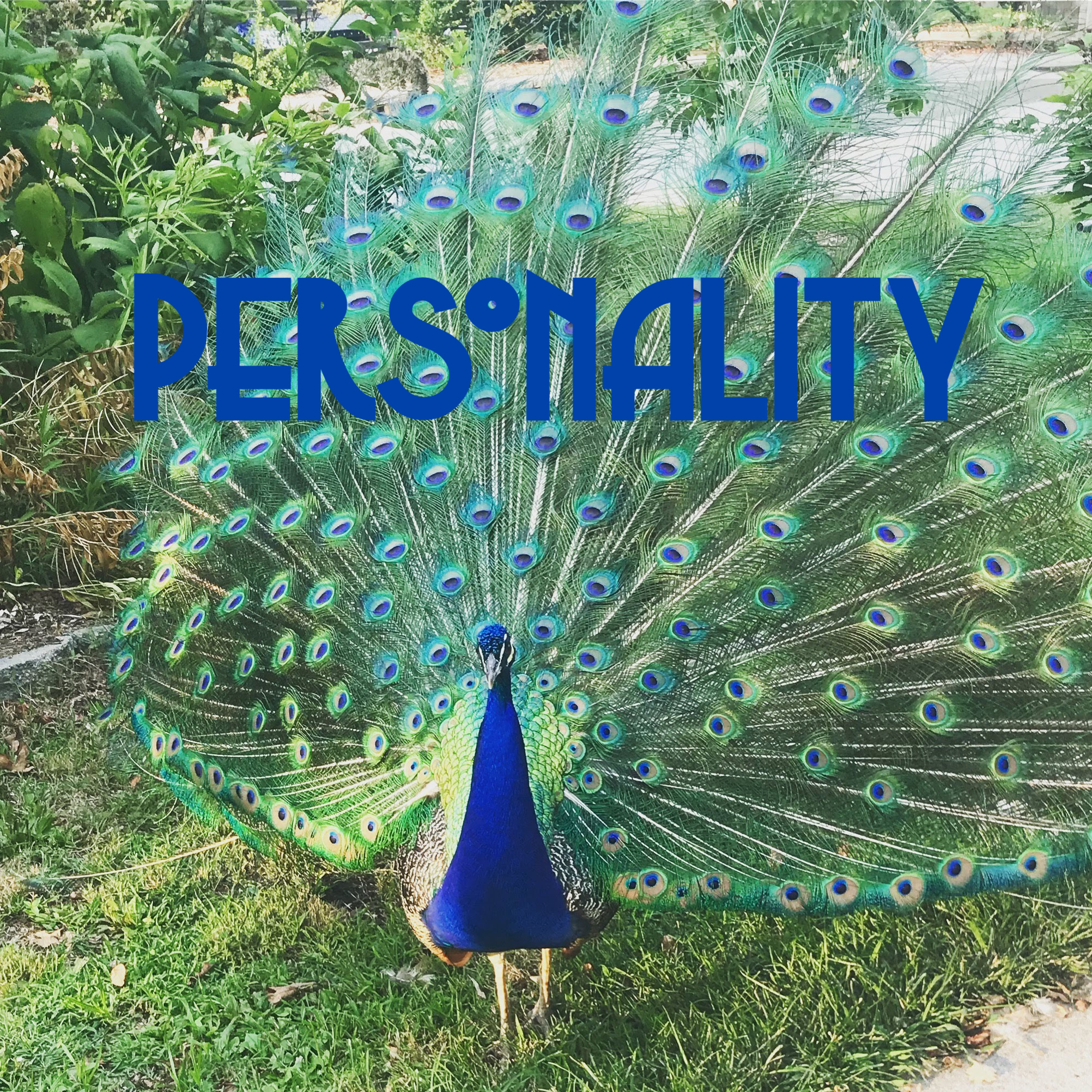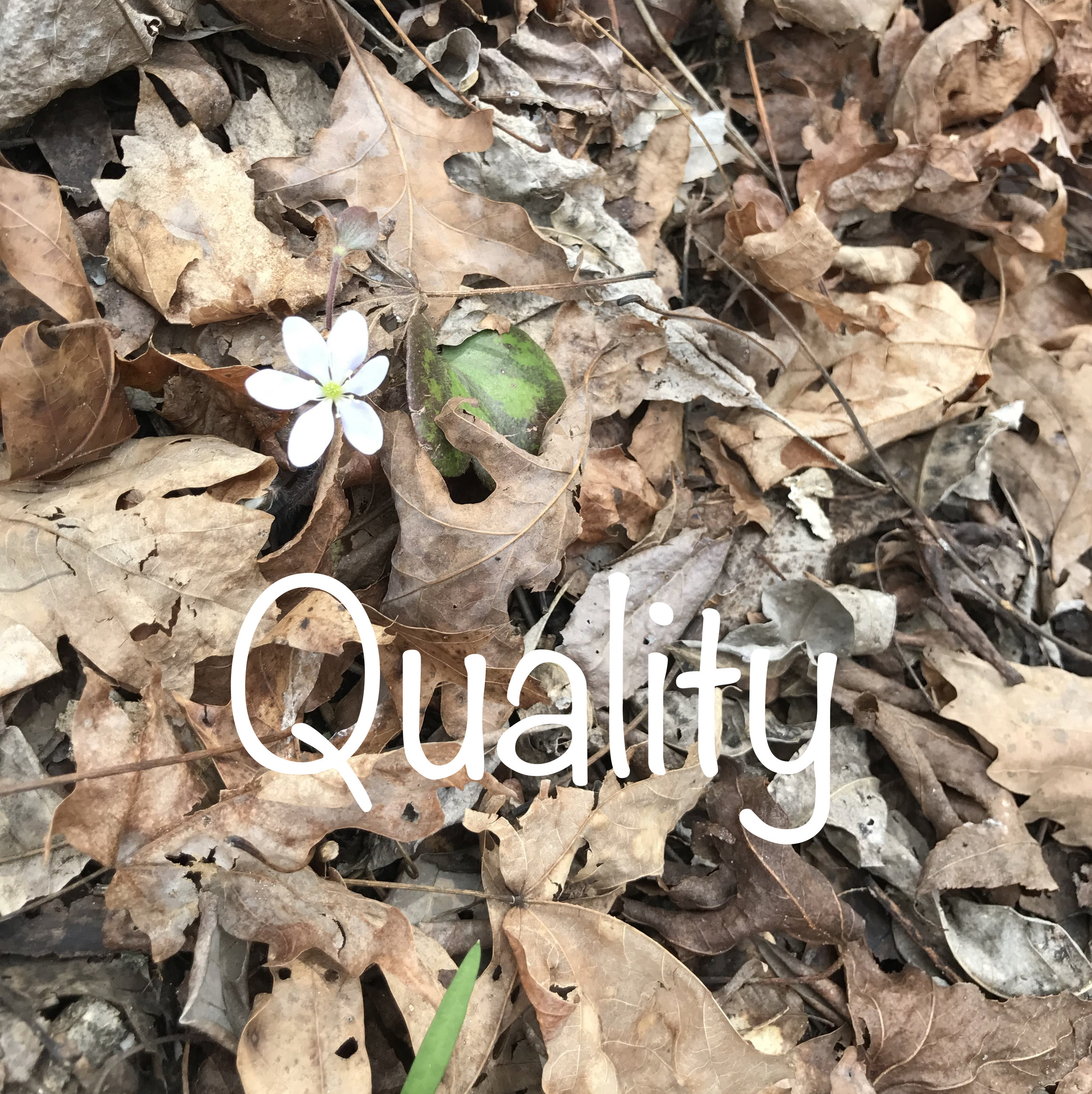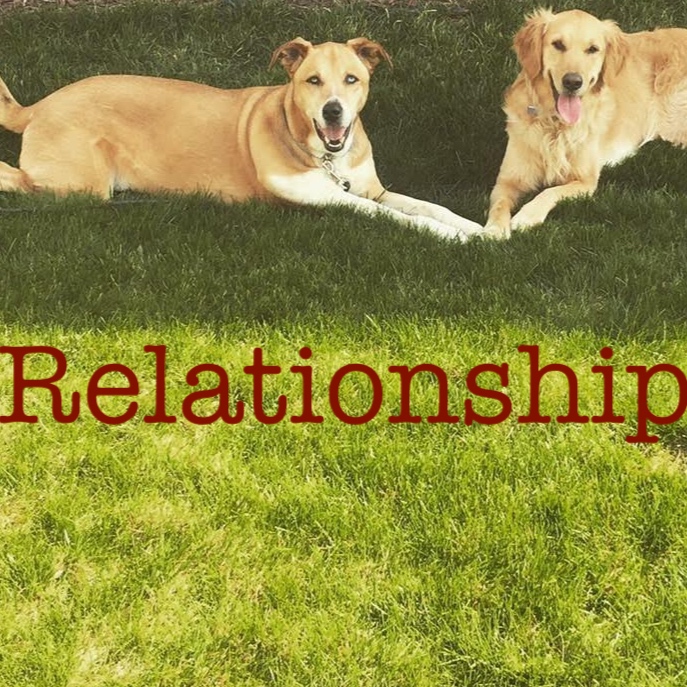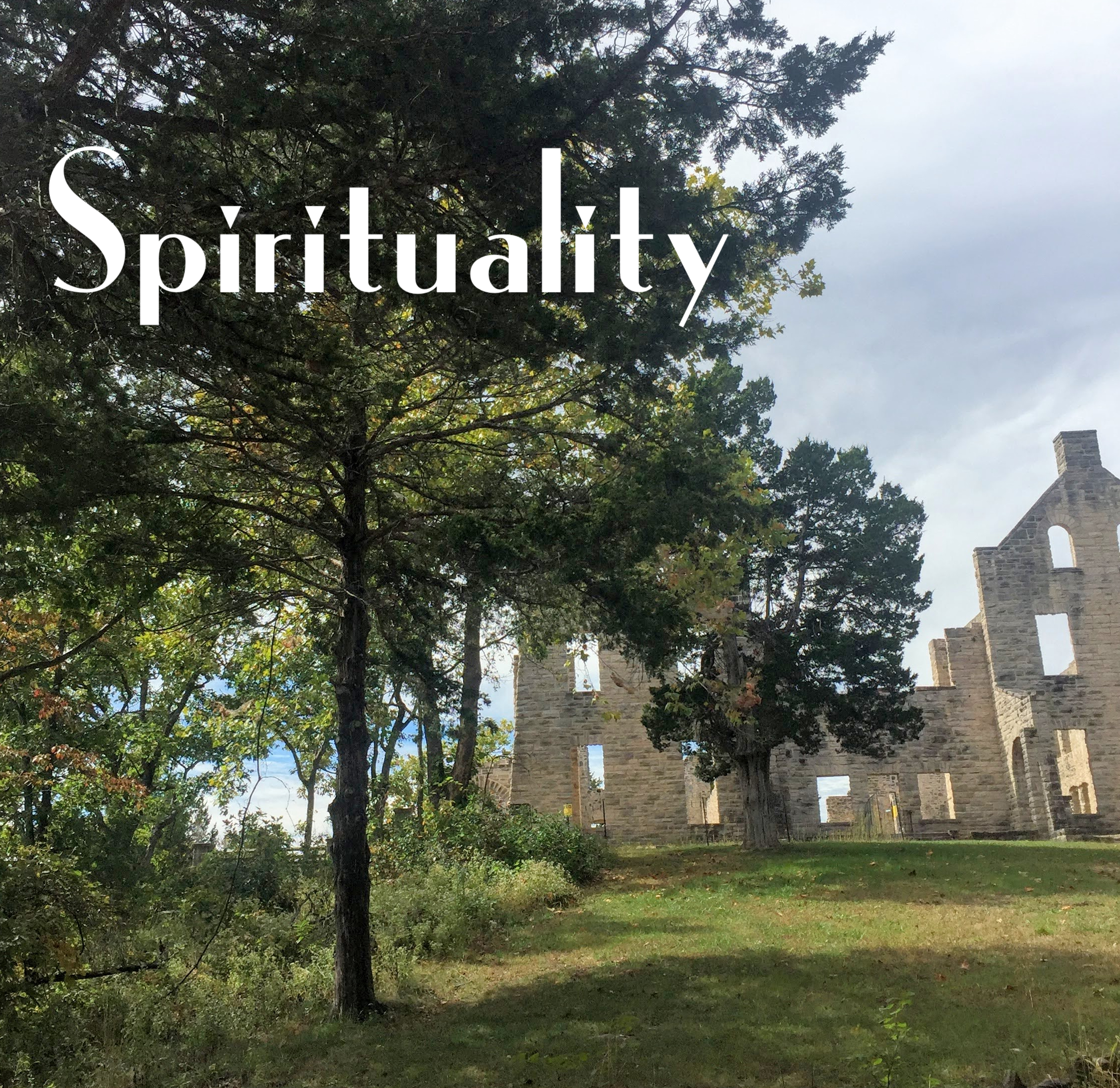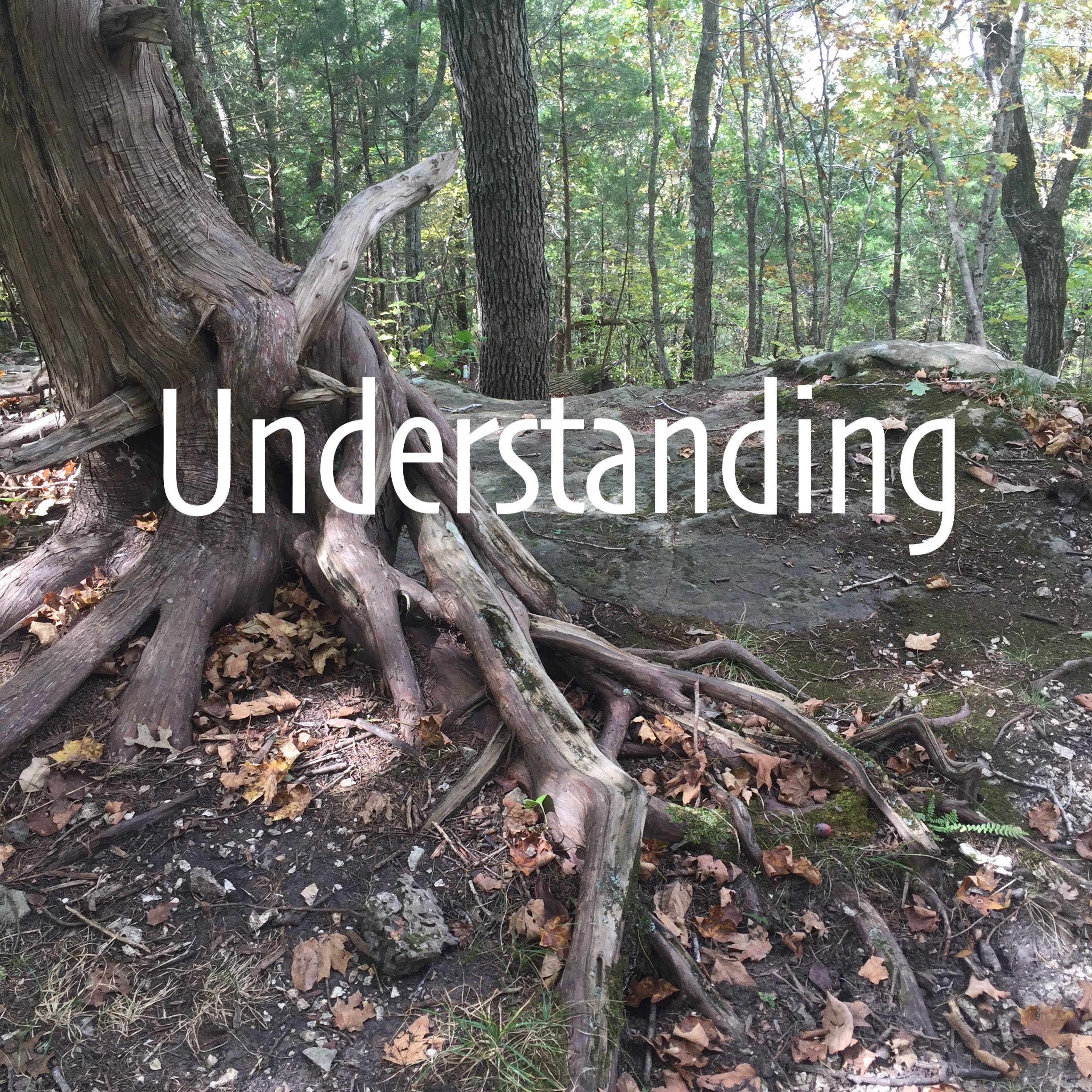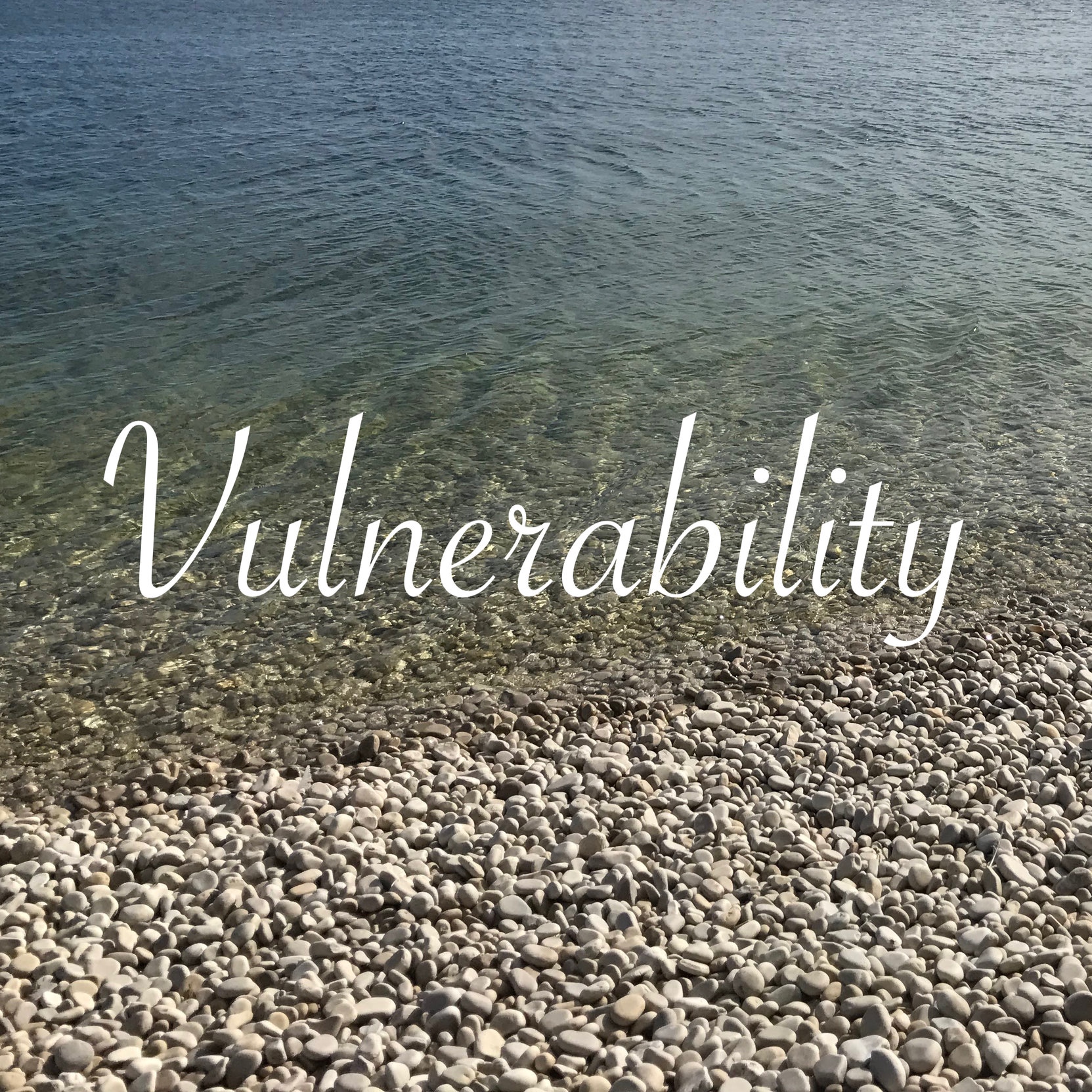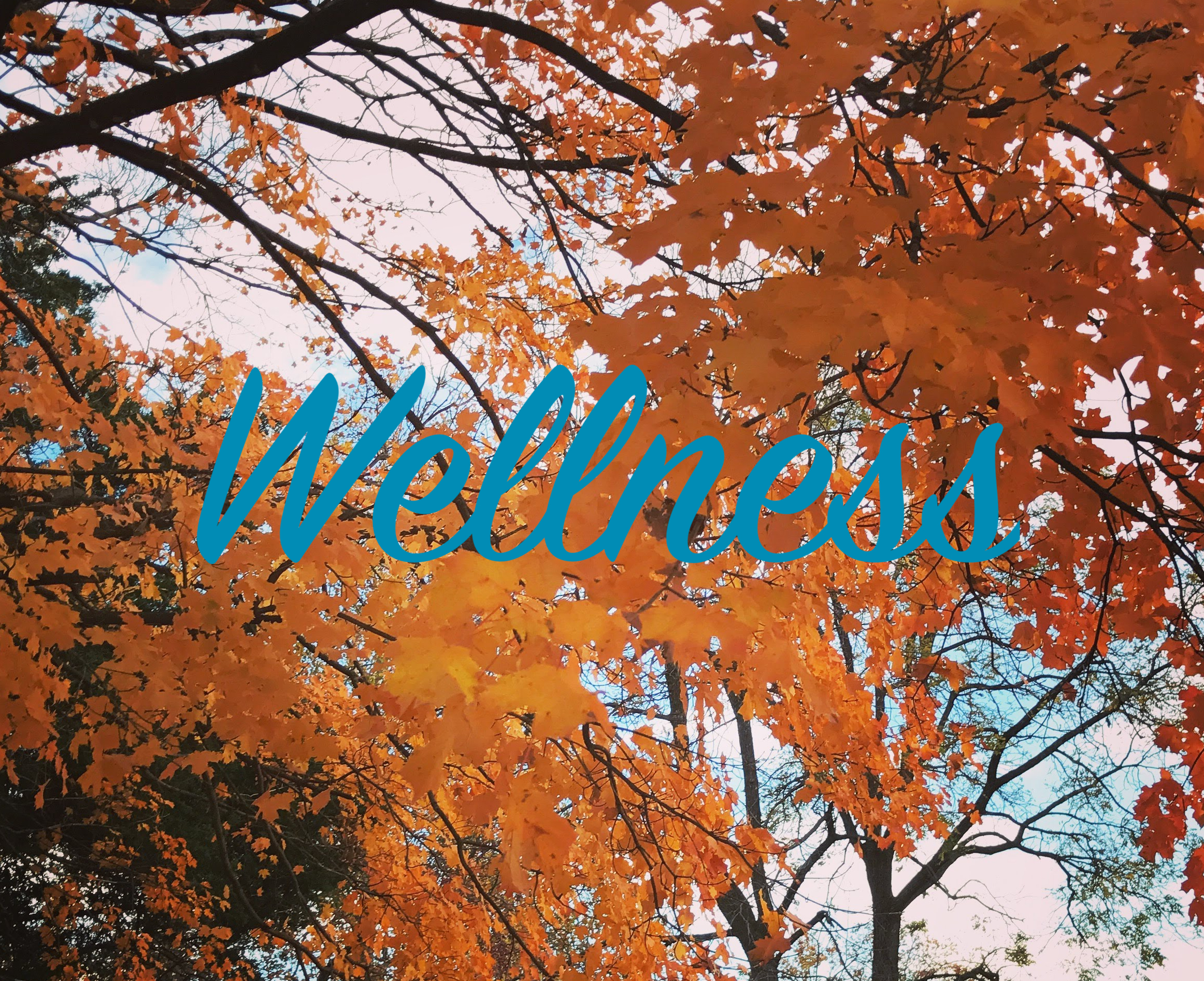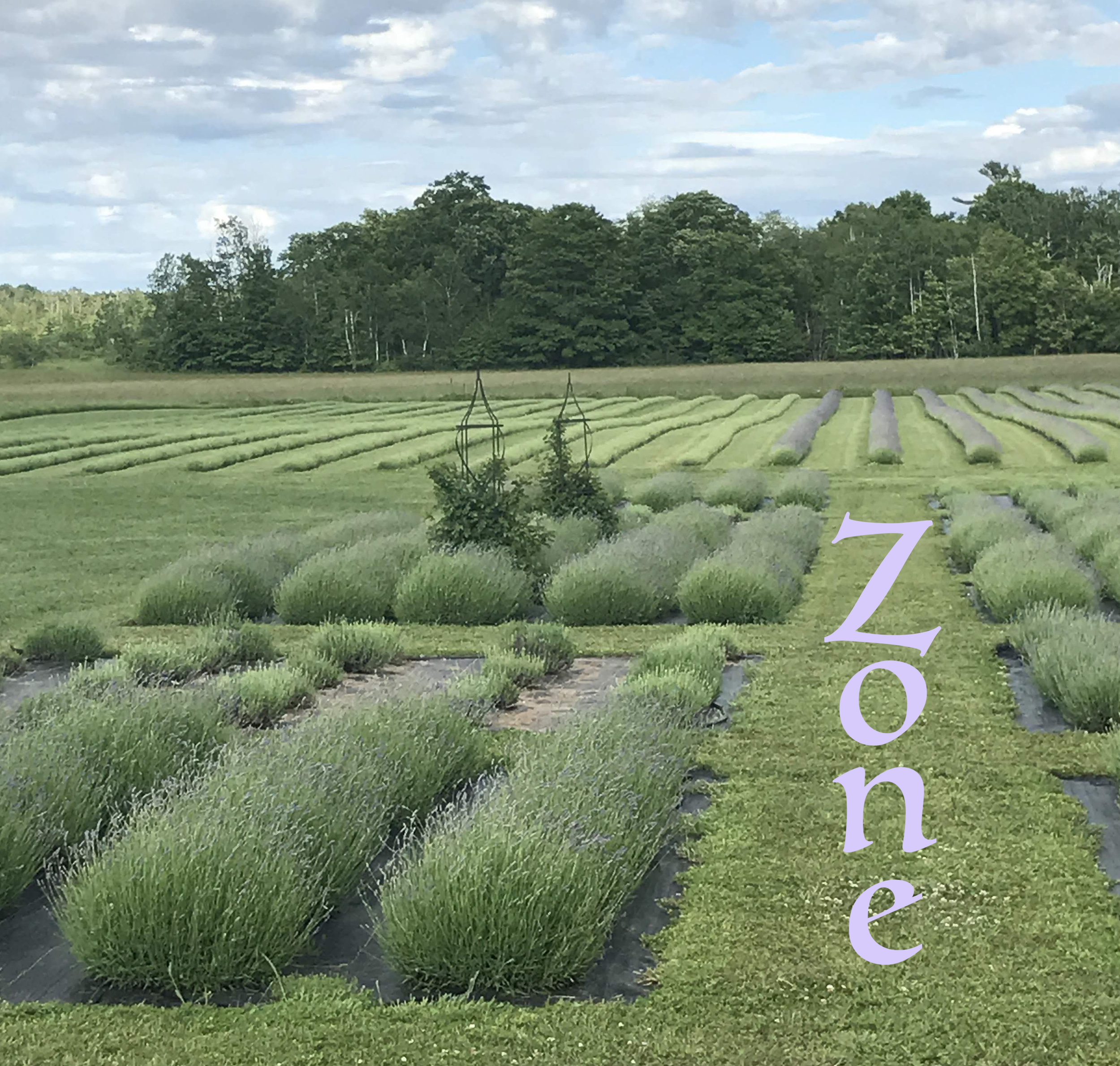A to Z Mental Health
May was Mental Health Month. Although promoting mental health and wellness is an every day process, I took the opportunity to talk more about it and provided 26 days of mental health topics for each letter of the alphabet on Place of Mind’s Facebook Page. The completed content and integrated picture collage are also posted here:
Let’s talk about Anxiety (and Avoidance)
Anxiety involves physical and psychological arousal. Anxiety is often thought of as something to be feared and gotten rid of. However, anxiety is a natural and healthy part of all of our lives and can even be helpful at proportional levels. Each person has different tolerance levels for and can show anxiety in different ways such as appearing nervous or distressed, shutting down, acting aggressively, or becoming irritable.
Avoidance is the main contributor to disproportional levels of anxiety that canoverwhelm and prevent us from doing everyday activities. Avoidance behaviors are any actions a person takes to escape from difficult thoughts and feelings (such as anxiety). Although avoidance may provide temporary relief, it actually leads to increased anxiety in the long-run. Continued avoidance takes a lot of energy, restricts your life, and results in experiencing more anxiety instead of less.
So, instead of avoiding and fearing anxiety, befriend your anxiety by acknowledging and labeling it and recognizing it as a temporary state. Identifying and accepting anxiety gives our body and mind practice with experiencing and recovering from anxious feelings; the more we do this, the easier it becomes. It can also be helpful to know the signs your body gives when anxious so that you can engage in the acceptance instead of avoidance practice. Because anxiety is essentially excess energy in the body, you can also be proactive by engaging in physical and mental activity, practicing relaxation techniques, and limiting substances that can increase anxiety.
Here are some additional resources for working with (instead of against) our anxiety:
Get Out of Your Mind and Into Your Life: The New Acceptance and Commitment Therapy
The Happiness Trap: How to Stop Struggling and Start Living: A Guide to ACT
The Anxiety Toolkit: Strategies for Fine-Tuning Your Mind and Moving Past Your Stuck Points
The Mindfulness Solution: Everyday Practices for Everyday Problems
https://www.mindful.org/befriending-fear-working-with-worr…/
https://thriveglobal.com/stories/befriending-anxiety/ What are some ways that anxiety presents for you and what have you found helpful for working with it?
If you could give your friend anxiety a name, what would it be?
Let’s talk about Breathing
Breathing is something that every person does automatically, but what could happen when we breathe with intention? Studies show that diaphragmatic (or deep) breathing creates a relaxation, increasing mental and physical health. Specifically, deep breathing has been shown to lower cortisol (stress) levels, increase sustained attention, and reduce anxiety and depression.
Taking slow, deep breaths through the belly activates our calming nervous system and brings oxygen to our bloodstream and brain, resulting in lowered blood pressure and a slower heart rate. A deep breath regulates the body and mind and reverses the stress response. Deep breathing may feel unnatural and many people engage in shallow breathing (in the chest) instead; however, shallow breathing actually increases tension and anxiety.
Deep breathing is part of meditation, yoga, and progressive muscle relaxation. But, the cool thing about our breath is that it is always with us, so we can practice anytime, anywhere. Try it when you are feeling stressed in a traffic jam or practice it while you are waiting in line at the grocery store. Just like anything, the more you practice, the easier it gets and you can train your body to automatically take deeper breaths. Engaging in a 10-20-minute daily breathing routine can have huge impacts on your health.
If you’d like to give it a try right now: Breathe in slowly through your nose, allowing your chest and lower belly to rise as you fill your lungs. Let your belly expand fully. Now breathe out slowly through your mouth or nose.
When do you think you could add in some deep breathing to your day?
Let’s talk about Cognition
Cognition is the process of thinking and knowing. It involves various mental functions including memory, attention, concentration, perception, learning, problem solving, and decision making. We each have a different cognitive profile that may make some cognitive processes easier and some harder.
Many things can impact our cognitive abilities such as chronic stress, mental and physical health diagnoses, medications, and aging. However, our brains are constantly reorganizing their neural structure based on experiences; this is called brain plasticity (or neuroplasticity). Because of neuroplasticity,the brain can recover from injury and we continue to have the ability to learn new activities, skills or languages even into old age. Cognitive therapy is also a process that helps people reduce their psychological distress by developing alternative ways of thinking.
What can you do to improve your brain health and cognitive skills?
Exercise your brain: engage in any mental activity that you find enjoyable and challenging
Exercise your body: physical movement reduces stress and keeps the brain strong
Mindfulness activities and meditation have been found to change neural pathways and influence focus and attention
Eat a healthy diet and stay hydrated
Get good sleep
Reduce stress
Spend time in enriched and stimulating environments
Engage in social activities: social isolation and loneliness can be bad for brain health
Stay away from activities that can negatively impact the brain such as smoking, drinking alcohol, and using illicit substances
When you have to remember or learn something new, try engaging with as many senses as possible. Reinforcement and repetitive activities also strengthen neural connections in the brain.
What is your favorite brain health activity?
Let’s talk about Dysregulation
Dysregulation is an imbalance in the body and mind that results in difficulties controlling emotions, behaviors, thoughts, and attention. The main brain process responsible for regulation is executive functioning. Most neurodevelopmental and mental health diagnoses involve some form of dysregulation. Change, stress, trauma, and physical illness can also create dysregulation.
In contrast, self-regulation involves taking a pause to think things through before taking an action. Self-regulation is a delicate balancing act that is important for health and wellness because it helps us bounce back from difficulties and stay calm. You can probably recall a time in your life where you have felt dysregulated. Depending on our vulnerabilities, it can happen often. Being proactive by keeping your body and mind healthy is a great way to stay regulated. However, being mentally healthy does not mean that you never become dysregulated; mental health is knowing what to do about it instead of engaging in avoidance, distraction, suppression, and worrying.
Here is a 3-step process to restoring balance from dysregulation:
Recognize that you are in control of your behavior. While it may feel as though things are out of your control, recognize that you have a choice in how to react. In every situation you have three options- approach, avoid, or attack.
Become aware of your feelings. Although it may feel as though they may last forever, recognize that all feelings are temporary. Monitor your body to get clues about how you are feeling and label them. For example, a rapidly increasing heart may be a sign that you are entering a state of dysregulation.
Focus on your deeply held values, rather than those temporary emotions. See beyond the discomfort you feel in the moment. Then, act in a way that aligns with your values.
The more you engage in self-regulation, it will become a way of life for you. Practicing regulation activities (also known as grounding techniques) are also important to strengthen connections in your brain so that your body and mind stay regulated. Engaging in psychotherapy can also be helpful as most teach self-regulation.
What is your favorite way to self-regulate?
Let’s talk about Expectations
Expectations are defined as cognitions which are future‐directed and focused on whether a specific event or experience happens or does not happen. Managing expectations is a huge factor and key skill in maintaining one’s emotional and mental health. Expectations can be a sign of vitality, energy, and passion for many of the things you want to experience or accomplish. However, unmet expectations for ourselves and others are primary contributors to stress and anger. Some mental health diagnoses, like anxiety, have also been referred to as “expectation disorders” where unfavorable consequences are expected when being exposed to specific stimuli, situations, or experiences.
The powerful influence of expectations can also be seen with the placebo and Rosenthal effects. The placebo effect occurs when the beneficial effects experienced from a drug or treatment are due to the belief in the treatment instead of the properties of the drug itself. The Rosenthal effect was named after Robert Rosenthal, who discovered that teachers' expectations affected student outcomes by influencing their moment-to-moment interactions with the children in thousands of invisible ways. If teachers had been led to expect greater gains in IQ for specific students, they gave them more time to answer questions, more specific feedback, and more approval; consequently, those students gained more IQ.
Therefore, it may be not the actual event or situation, but expectations about the situation, that determine the outcome. Here is a guide that balances focus and flexibility to manage expectations for mental and emotional health:
View your expectations as a normal part of life that can serve the function of guiding, inspiring and teaching you. Looking at them with less judgment and pressure attached to the outcomes and more matter-of-factness to the whole process makes them less demanding and detrimental.
Be flexible and know that your expectations can change for many reasons. Letting them go or change without being judgmental is a healthy and effective way to learn to “go with the flow.”
Remember that not all expectations can or should be met. Acknowledge that both you and others whom you expect things from are humans who are trying to do the best they can do. It is important and necessary to hold self and others accountable but is equally important to have some patience and compassion toward self and others as real life happens.
Read more about managing expectations at https://www.eidi-results.org/blog/2016/5/11/the-expectations-game-achieving-balance-for-emotional-and-mental-health
Let’s talk about Feeling
Of course, feeling has to be the “F-word” for mental health A to Z. Feeling has to be the number one cliché word used to define the mental health field. “How does that make you feel?” is the term used by mental health clinicians portrayed in the media. Although these portrayals are definitely exaggerated and incomplete, feeling is critical to our mental and emotional health.
When most people think of feeling, they likely think of feelings as an emotional state or reaction (a feeling of joy); however, feelings can also be sensations and experiences (the feeling of the sun on your skin). Both definitions are relevant to mental health and wellness. Despite common portrayals, feelings are not flowery things to be joked about or glossed over, they are at the root of every experience. People often shy away from the first definition of feelings because they are subjective experiences (defined by the person experiencing them) that cannot always be clearly expressed or understood; this can make them uncomfortable, mysterious, and scary.
Although there is often a connection between thoughts and feelings, they are distinct parts of our experience. Many people label their thoughts as feelings. For example, someone may say, “I feel foolish” and give a false self impression that they are a foolish person. However, foolish is not actually a feeling; it is an action that results in a feeling (“I feel embarrassed because I was fooled.”). In this example, the thought is, “I was fooled.” and the feeling is, “I feel embarrassed." Therefore, the person in this example is not foolish themselves but was fooled by someone else. Being able to accurately label your experiences, by accurately labeling and identifying the different thoughts and feelings involved, will help you manage and understand your experiences and emotions more effectively.
Allowing feelings without placing judgments (thoughts) on them is difficult and takes practice. However, all feelings are valid parts of our experience that do not need to be logically explained, challenged, or changed. Labeling them, recognizing them as temporary, and accepting them as they make them less scary and supports mental health.
Let’s talk about Gratitude and Grief
Gratitude involves the ability to feel and express thankfulness and appreciation. Gratitude is strongly linked to mental health and general well-being. Our thoughts have the power to shape our brains and experiences; so, the more conscious we are about perceiving an experience as positive, the more we will notice positivity in our lives and experience gratitude.
Grief is a normal reaction to loss or change; it can be for people, situations, or parts of ourselves. Each person’s grief journey is different and is a deeply personal process. Despite common belief, grief is not something to be “gotten over” by “working through” a set of stages. It is messy and complicated and may get better and also feel worse at times. Sitting with grief means trusting the process, pain and all. Although we move forward, we will always carry it with us.
How do these two seemingly opposite concepts go together? They are both emotional experiences important for mental health. Allowing ourselves to really feel grief and gratitude, to allow ourselves to experience them as they are, takes courage and is part of mental health. It is easy to be grateful when things are going well, but becomes harder when things aren’t going so well or when we experience grief. Gratitude does not change the fact that there is immense pain in loss, but it can bring us to the present moment and ease some of the suffering. One does not erase the other but the two can exist together.
Let’s talk about Humor
Humor is one of the focus topics for Mental Health America’s Mental Health Month 2019. So, here is great information for mental health and wellness from their humor fact sheet:
Finding humor in the circumstances of life can lift moods with laughter and help people to better deal with and overcome difficult experiences. When we laugh, our levels of stress hormones decrease; our brains experience increased activity in the reward system, our heart, lungs, and muscles are stimulated, and endorphins (the body’s natural pain blockers) are released.
Incorporating humor into our daily life has many benefits. It makes our immune system stronger; betters our interactions with others; improves mood and relieves anxiety; and supports less burnout on the job. Humor and laughter also reduce the risk of developing chronic health conditions by reducing the risk of blood clots, heart conditions, and other stress-related diseases.
10 tips for incorporating humor into your life:
List three funny things that happened to you each day
Find a TV show or movie that tickles your funny bone
Watch stand-up comedy live or on TV
Reach out to someone who gets your sense of humor
Get online, find things that make you smile, and spend 15 minutes checking it out
Have a game night
Try laughter yoga
Read a funny book
Spend time with an animal or child
Incorporate funny things that make you smile into your everyday environments
How do you incorporate humor and laughter into your life?
Visit bit.ly/4mind4bodyHumor to read the original post and more information
Let’s talk about Interoception
Interoception is a lesser known sense that helps us feel and understand what is going on in our body. At the most basic level, interoception allows us to know when we are hungry, thirsty, and tired. Interoception also allow us to identify what signals from our body are telling us about our emotions. Interoception is the sense that connects our body and brain, making us self-aware.
Difficulties with interoceptive sensory processing can result in difficulties knowing when we feel hungry, full, hot, cold, or thirsty. Having trouble with interoception can also create difficulties “feeling” emotions and make self-regulation a challenge- which is critical for mental health (see past post on dysregulation and feelings). For example, an individual who has a growling stomach, heavy muscles, dizzy head, and shaky hands may have a meltdown because of difficulty identifying the real source of discomfort (hunger). Or, an individual may not recognize the body’s fear signals and may engage in dangerous behaviors.
Interoception is a sense that develops as we develop. Because it is not as well-known as other sensory processing systems, we are still learning what techniques promote interception. So far, mindfulness activities have been shown to be the most effective for improving interoceptive awareness. An individualized sensory diet made up of physical activities and accommodationscan also be helpful for sensory processing issues.
Let’s talk about Joy
Joy is an emotional and physical response that brings about a feeling of great pleasure and happiness. We feel joy because of the release of dopamine and serotonin neurotransmitters in the brain that start a cascade of responses in the body and mind. Experiencing joy and other good feelings can boost your ability to bounce back from stress, solve problems, think flexibly, and even fight disease. The more you experience joy, the less time you have for stress.
Joy is an individual response that can come from big events and small everyday occurrences. You can increase joy in your own life in various ways. One way is to find and participate in enjoyable leisure activities; this could be something that you enjoyed as a child, something you have always wanted to do, or, try something new. Some activities may provide an even greater sense of ease and satisfaction, often referred to as “flow.”
Letting go of physical and mental clutter can also promote joy. This could involve getting rid of unnecessary items, de-cluttering your most cluttered area, and forgiving people from your past. Freeing up physical and mental space allows for more joy to easily flow. Taking time to celebrate and enjoy things without quickly rushing on to the next also promotes joy. Taking time to indulge and revamp and be more productive.
Joy and unhappiness can co-exist. Just because you allow yourself to feel joy does not mean that there are not also difficulties and sadness in your life. But, in order to feel joy, we have to stay connected to all of our feelings, even the bad ones. Setting aside worry time when stressful thoughts come up unannounced can be helpful to stay in the present moment and experience more joy. Because our body and mind are connected, we can also trick ourselves into feeling happy by doing things that release the same neurotransmitters such as exercise, petting an animal, or simply smiling.
Read more about creating joy and satisfaction at https://www.mentalhealthamerica.net/create-joy-and-satisfaction
What brings you joy?
Let’s talk about Knowledge
Knowledge is the information and skills that come from experience. It can involve formal training, like learning at school, or informal training, such as practicing new skills. Learning new things is like strength training for the brain and improves our mental wellbeing. Knowledge also empowers us and sharing our knowledge can empower others by promoting active participation and opportunity.
Self-knowledge, or self-awareness, is another form of knowledge positively associated with mental health. The key to taking care of our own mental health involves recognizing our mental states, knowing what works and does not work for us, communicating our needs, and creating meaning. Awareness of ourselves also helps us to understand others better. Self-knowledge is an ongoing process and psychotherapy, journaling, and checking in with trusted others can help.
Knowledge builds our self-competence and confidence. Each person has a different learning and information processing profile and finding something that you enjoy and are good at promotes mental health. As Albert Einstein points out, “Everybody is a genius, but if you judge a fish. By its ability. To climb a tree, it will live its whole life believing that it is stupid.” Continuing to learn and share learning with others throughout the lifespan is associated with greater health, satisfaction, and optimism.
What is something that you would like to learn more about?
Let’s talk about Loneliness
Human beings are wired for connection as 80% of our brains are meant for social processes. Loneliness can affect health by contributing to heart problems, depression, higher stress levels, decreased memory, and substance abuse risk. Loneliness and mental health are strongly related; mental health difficulties increase your chance of feeling lonely and feeling lonely can negatively impact your mental health.
Although social connections are important for our mental health, each person has different social needs and preferences. Loneliness is not just about being alone. It is also possible to feel lonely even when you are around others. Especially if you are around people who do not understand or accept you are you are. And, being alone does not mean that you are lonely. It all depends on what feels comfortable and safe for you.
Loneliness can be overcome but it takes conscious effort. Relationships are about quality not quantity, so having a few close friends is enough to prevent loneliness. Reach out to an old friend or try meeting new people who share common attitudes, interests, and values. Social media can be a great way to connect with others, especially if it is something new for you or something you have not done in a while. However, there is no substitute for real face-to-face human connection. Try going to new places or consider doing an activity that you enjoy. Because loneliness is largely a state of mind, having an open mind and expecting the best can also increase your relationships and mental well-being.
Let’s talk about Moods
Although the two are related, moods are different than emotions; they are more generalized, less intense, and longer lasting. Because of this, our mood impacts all aspects of our life and mental health. Mood difficulties are hard to endure and are also risk factors for other health concerns such as heart disease and dementia. There are various different types of mood diagnoses that can involve depressive symptoms, manic symptoms, or a combination of the two.
Depressive symptoms include loss of interest in activities (even ones that are usually pleasurable), changes in sleep and appetite, irritability, low energy, and feelings worthless or hopelessness. Manic symptoms look like the opposite of depression symptoms and involve periods of unusually high energy or activity, grandiose ideas, unrealistically high self-esteem, decreased need for sleep, thoughts and activity at higher speed, and ramped-up pursuit of pleasure and risk taking. Bipolar Disorder involves extended periods of manic symptoms and should not be confused with moodiness or mood swings, which are more rapidly changing mood states and intense emotional expressions.
Mood symptoms can occur for many reasons. If you are experiencing mood or cognitive changes that last for more than a few weeks, it's a good to bring it up with your doctor or consult a mental health specialist. Modifiable lifestyle factors can transform and improve our mood and risk for developing mood disorders:
Exercise and movement: Specifically, researchers found that people who performed resistance/strength training two or more days a week saw "significant" reductions in depressive symptoms
Sleep: Practicing good sleep hygiene is important for getting good quality, not just quantity, of sleep
Diet: There is evidence for aMediterranean-style diet (fruits, vegetables, olive oil, whole grains, and lean protein such as chicken and fish, and healthy fats) and avoidance of inflammation-producing, processed foods
Music: Listening to music selectively actives systems in the brain associated with positive moods
Pets: Caring for pets can reduce stress, depression, and loneliness, and encourage exercise
What boosts your mood?
Let’s talk about Nature
Spending time in nature is a simple way to reduce stress, anxiety, and depression, and improve overall mental wellness. Research in a growing scientific field called ecotherapy has shown a strong connection between time spent in nature and reduced stress, anxiety, and depression. Interacting with natural spaces offers many therapeutic benefits. Calming nature sounds or outdoor silence can lower blood pressure and levels of stress hormones. The visual aspects of nature can also have a soothing effect by distracting your mind from negative thinking, so your thoughts become less filled with worry.Nature also gives us the opportunity to experience a connection with the larger world, outside of ourselves, which heightens our well-being and strengthens positive engagement with others.
There are many ways to tap into nature’s powerful effects. Your time in nature could range from spending just 20 to 30 minutes walking in the park to regular three-day weekend getaways in the woods. The point is to leave stimulating urban settings and surround yourself with a natural environment. And, the greatest benefits will come from making it part of your normal lifestyle by focusing on places you find the most pleasing.
You can even try to combine your nature outings with regular exercise or attend group nature walks. If you can't make it outside, listening to nature sounds or lookingat pictures of nature settings, your favorite spot, or a place you want to visit can have similar effects. Or, try finding ways to interact with and notice the natural environment in little ways throughout your day such as having a houseplant, noticing the sun on your skin, or watching birds through a window.
How do you incorporate nature into your lifestyle?
Let’s talk about Observation
When we observe, we are noticing our direct sensory experiences as they are happening right now. Observations are what we feel, sense, see, taste, touch and hear without labeling it, reacting to it or judging it; this is tricky for most people because minds want to label what is happening rather than just being with the experience. When we observe our experiences, we are allowing them to just happen without pushing away or trying to change them. Observation is just noticing, nothing more.
Observation is important for mental health and wellness because it helps you feel alive in the moment you are actually in. It is more powerful to just notice the present rather than think about the present, past, or future. When you observe, you are much more likely to be calm, centered and aware. Observing allows us to check-in with what is going on right now. Observation allows us to drop the struggle of automatic and judgmental thinking to see and embrace things as they really are. When we do this, we can make better decisions about what is right for us, know what we need, and we can make choices based on what matters to us. When we observe, we change our relationship with our thoughts; by recognizing that we don’t have to react to every thought, we gain more control over our behavior and attention. We spend less time and energy caught up in the dramas our minds would otherwise create.
You can practice observation by intentionally observing your senses such as your breath, physical sensations, and sounds. When observing your thoughts, notice them come and go, without clinging to or avoiding any of them. Watch each thought appear and fade like cars on a train, waves in the ocean, or the rising and setting of the sun. As you practice observation, you will undoubtedly notice your mind wandering to other things. When you notice your mind has wandered, see it as a sign of success, acknowledge it, and gently bring it back to observing. You can practice observation with everything you do such as taking a shower, driving to work, walking to your car, or eating your lunch. The more you do it, the easier it will be and the more connected and present you’ll be. As you go through your day today, try observing as much as you can without placing thoughts on or judgments about what you observe.
Let’s talk about Personality
Our personality is made up of a distinctive set of traits, behavior styles, and patterns. We each have a unique personality that makes up our character and influences how we perceive ourselves, others, and the world. Because our attitudes, thoughts, and feelings are all part of our personality, understanding our personality traits is important for our mental health.
Our personality influences how we cope with normal stresses and form relationships with others. Certain personality traits have been associated with mental health difficulties while others seem to protect against them. Neuroticism (the tendency toward negative feelings) seems to be the personality trait associated with mental health risk and diagnoses like major depression and generalized anxiety. On the other hand, conscientiousness (diligence and dependability) and agreeableness (easy- to-get-along-with) personalities may protect from mental health concerns. However, all personality traits fall on a continuum and are only one influence on mental health.
Genetic influences for personality traits are pretty low; therefore, life experience can protect from mental health concerns. Different personalities thrive in different places and with different people. Therefore, it is more important to understand our own personality so that we are aware of our tendencies and can reach out for the right support when needed. Although changing from one end of a personality trait spectrum to another (i.e. from an introvert to an extrovert) might be extremely difficult, there are things you can do to change certain parts of your personality that can result in real changes to the way you act, think, and function:
Change your habits: With enough practice, replacing your habitual responses with new patterns of behavior is one way to create personality change that will eventually become second-nature
Challenge your self-beliefs: If you believe that your personal attributes are changeable, you are more likely to try to change them.
Treat it as a discovery and learning process: By shifting to a curiosity and growth mindset, rather than a fixed one, you may find that it is easier to experience real change and growth.
Fake it till you make it: If there is a behavior you really want to have, start doing it, even if it feels strange or uncomfortable. Engage in the behavior enough and it will also become second-nature.
Let’s talk about Quality
Quality of life is typically the “quality” term associated with health and well-being. Quality of life is how we think about our position in life, based on our culture and value systems. Although physical and mental health are important for our quality of life, work, housing, school, communities, personal beliefs, spirituality, and social relationships also contribute.
Quality of life is a broad concept that is ultimately defined by individuals and groups based on goals, expectations, standards, and concerns. However, Abraham Maslow attempted to create a more universal theory known as Maslow’s Hierarchy of Needs. This hierarchy is usually illustrated by a pyramid with basic to complex needs. At the bottom of the pyramid are our essential physical needs such as food, water, sleep, and shelter. As we move up the pyramid, our needs become more psychological and social such as the need for safety, love, and friendship. Further up the pyramid are needs for personal esteem and self-actualization, which is a process of growing and developing as a person in order to achieve our individual potential.
Social scientists agree that material wealth is not the most important factor in assessing a life lived well. Once basic health and safety needs are met, more money does not equal more happiness. Balance is critical to our quality of life and well-being. For example, people who feel they have a good work-life balance are more satisfied with their job and their life and experience fewer symptoms of depression and anxiety. But, having a poor work-life balance increases the risk for health conditions like sleep problems, digestive disorders, and mental health problems. Working overtime also increases the likelihood of having symptoms of depression, especially in men. Because each individual has unique potential, their self-actualization process and definition of quality of life is also personal and unique. Quality of life is ultimately about balancing our values and actions in a way that prioritizes our physical, mental, social, and personal needs.
How do you find balance and quality in your life?
Let’s talk about Relationships
Relationships and social connections are the number one ingredient for our health and wellbeing. We are social beings by nature. When we first come into the world, we literally need others to survive. As we progress through life, this same need is critical for our survival. Social connectedness and positive relationships give us a longer life spanas well as better physical health, bettermental health, and better cognitive functioning. People with strong social relationships are 50% more likely to live longer.
Relationships are so important that scientists have discovered that social rejection actually influences the brain in the same way as physical pain. And, that even taking Tylenol after being rejected resulted in less distress and brain activity in the pain regions. This research shows us that our brains process a broken bone in the same way as an aching heart.
Relationships come in all shapes and sizes and it’s the quality, not quantity, that counts. They can even come in animal form. Having a pet can improve physical activity, decrease stress and blood pressure, and reduce loneliness. Having positive social connections in our lives is ultimately about finding our tribe. Search for the people who understand and support you. You will know you have found your tribe when you feel safe to be yourself and share your gifts. Your tribe may be a group that is already out there or you may get to create your own. You can find your tribe by trying things and discovering your gifts. When you find your tribe, you can flourish and be vulnerable. Even having just one person in our tribe greatly increases our health and wellness.
Let’s talk about Spirituality
Spirituality is another focus topic for Mental Health America’s Mental Health Month 2019. Spirituality is something that anyone can experience but may mean something different to everyone. Spirituality is a unique experience that is not necessarily tied to any particular religious belief or tradition. Spiritual has been defined as being connected to something larger than oneself and feelings of peace, well-being or a sense of wonder about the universe.
Caring for your soul as an important part of taking care of yourself and your health. Spirituality practices like meditation are linked to increased levels of feel-good chemicals in the brain like serotonin, dopamine, and endorphins; and decreased levels of cortisol and noradrenaline, which are associated with stress. Higher levels of spirituality have also been linked to increased compassion, strengthened relationships, and improved self-esteem.
We can find spirituality in different ways such as through religion, music, art, nature, or values and principles. If you would like to improve your spiritual health you could start by identifying things in your life that give you a sense of inner peace, comfort, strength, love, and connection. Next, try setting aside time every day to engage in activities that help you develop spiritually by experiencing that place of comfort and peace.
Visit http://bit.ly/4mind4bodySpirituality for more information
Share your favorite inspirational verse or how you incorporate spirituality into your life.
Let’s talk about Time
Time is something that many people want more of- more hours in the day, days in a year, or years in a lifetime. As a society, we fill up our time with so much stuff that we are in a constant state of busy-ness. There is a common belief that things have to be busy or hard or we’re not doing them right. Therefore, we rush through our days and overextend ourselves just to cross things off of our to-do list.
Although it may feel like we are being productive by staying busy, busy-ness is a distraction. When we are busy, our minds are busy, but our brains turn off; we go through automatic motions and just keep filling the space with more stuff without thinking. Staying busy takes up all the space for the day and does not allow space to see what we are doing. If your mind is always busy then you have no sense of what is around you. Busy-ness takes us away from all the possibilities that could happen throughout our day.
Giving up this state of busy-ness doesn’t mean that we aren’t going to be active and creative. Giving up busy-ness means that we will have space and time to be active and creative. In giving up busy-ness, we’re trading in a constant stated of mental speed for space to actually relate to what’s in front of us. The space itself will actually accomplish most of what you need to do.
To invite more space into your life, ferociously carve out time to work on yourself. Take the first hour of your day to sit, reflect, and just be in the moment. If you sit in the morning, you will find that your day is 30 hours long. When you actually take care of yourself and create openness in your life, life will respond by cooperating. Things coincidentally happen as they need to and your day takes care of itself. You will also find that tuning into the natural energy of the world gives you more energy and joy.
How could you let go of busy-ness and invite more space into your life?
Let’s talk and Understanding
Understanding is not about gaining knowledge but is a form of emotional intelligence and awareness that involves perceiving and interpreting information. To understand and be understood is the most basic human need that enhances both personal and social well-being.
Understanding others is part of empathy. Empathy involves more than just sensing other people’s feelings and emotions, but also taking a genuine interest in them. Without experiencing that others know us, we are left feeling alone. When someone listens to us, it reminds us that we are not invisible or alone and we feel accepted, understood, important, and valued. Feeling understood activates the reward and social connection areas in our brain, while not feeling understood activates brain regions associated with negative affect.
Not only are understanding and empathy important for our personal relationships, but research also shows that the best managers and doctors have high emotional intelligence and are empathetic. Empathy is often considered a “soft” skill in, but soft should not be confused with easy, as there is nothing easy about understanding others’ concerns and feelings. Understanding requires REAL listening, which is rare as many are too quick to react, judge, disagree and fix. Real listening also benefits the listener by building trust, avoiding misunderstanding, and creating deeper connections. The next time you have the chance, try taking the time to really listen to another person and see how it changes their life and yours:
Listen with the intent to understand, called active or mindful listening, not with the intent to respond.
Be fully present, not thinking about the past or future.
Practice coming from a place nonjudgement and curiosity; this gives the other person a sense of freedom, acceptance, and safety.
Instead of only focusing on the content of what is said, try to recognize how things are said and the emotions in the other person that you have maybe felt before.
Communicate back what you have heard and how you are feeling.
Added Bonus- Two of my all-time favorite videos about empathy and listening to understand:
https://www.youtube.com/watch?v=1Evwgu369Jw
https://www.youtube.com/watch?v=-4EDhdAHrOg
Let’s talk about Vulnerability
Brene Brown, a popular researcher and author, is credited with introducing and exploring vulnerability in our lives. She defines vulnerability as “showing up and being seen.” Vulnerability is about fully engaging with life; it involves uncertainty, risk, and emotional exposure. Showing our emotions and being vulnerable takes courage, but suppressing them in an attempt to appear strong is detrimental to mental health.
Promoting mental health means embracing vulnerability and having the courage to be imperfect. Perfectionism is the belief that we cannot have flaws and is centered around striving to please others. Instead, we can choose to embrace our flaws and be the best version of self, imperfections and all. The belief that we are enough just the way we are relaxes us and makes us gentler and kinder to ourselves and others. Vulnerability means allowing ourselves to make mistakes instead of trying to hustle to be perfect, earn approval, and avoid shame. When we do make mistakes, rather than trying to cover them up, we can learn to say, “We’re sorry. We’ll try to make it better.”
Because vulnerability takes us out of our comfort zone, it can be scary. But, when we lean in to the discomfort of vulnerability, we are smiling at fear and choosing to show up anyway. We are acknowledging that things are not certain and are opening ourselves up for opportunity; in doing this, we are also opening ourselves up to experience joy, belonging, trust, creativity, and love. By daring to be ourselves, we will also learn things about ourselves and unlock our true potential.
“What makes you vulnerable also makes you beautiful.” -Brene Brown
I encourage you to watch the Brene Brown’s video and think about where you have fear and how you’re currently protecting yourself from vulnerability? https://www.ted.com/talks/brene_brown_on_vulnerability?language=en
Let’s talk about Wellness
Wellness can be applied to our lives in many ways. The definition of wellness, as used by the National Wellness Institute, is “an active process through which people become aware of, and make choices toward, a more successful existence.” Wellness is a conscious, self-directed and evolving part of health that helps us achieve our full potential. It is a positive and affirming process that contributes to healthy living.
Wellness is holistic and involves multiple areas of our lives including occupational, physical, social, intellectual, spiritual, environmental, and emotional well-being. Each individual defines what wellness means to them in each area. To begin to define wellness for yourself, think about your positive qualities and strengths; how you contribute and share your gifts; what type of work feels the most satisfying; when you feel at ease and in control; what was happening when you felt the most physically and mentally healthy; what you do to play; and how you have developed your belief systems, values, and world-view.
Here are some additional tips to help you live a well life:
Connect with others
Stay present
Get physically and mentally active
Help others
Get enough sleep
Experience joy and satisfaction
Eat well
Take care of your spirit
Know when you are having a hard time and need to reach out for help
Let’s talk about X
There is a sense of satisfaction that comes when we put an X next to an item on our to-do list. To-do lists can help us organize and prioritize things that we want to do, leading to decreased stress and a feeling of productivity. However, to-do lists can also create stress and burden, decrease confidence, and feel never-ending. Although list making is a personalized process and may not be for everyone, here are some cautions and guidance when it comes to to-do lists.
First, the cautions: When we center our days around completing our to-do lists, we are filling up all the space in our day without realizing what we are doing by being busy. When we get busy and do not take the time to relate to ourselves and the world around us, life is going to give us a hard time and we do not actually live.Stressing about deadlines and to-dos does not allow us to enjoy the little things in life. Having things piled up on a never-ending list also leads us to focus on the negatives instead of the positives. Stress decreases our productivity and creativity and mental health.
Now, some guidance: Think of your to-do list as an evolving plan for focusing effort and attention in the near future. To be most useful, to-dos should be a physical action that can be accomplished in one sitting (about 10-20 minutes depending on your level of busy-ness). Break big projects down into smaller concrete steps. Only list things that you will do in the immediate future (keep those bigger ideas and goals in a different place). Keep your list current and reflective of your realistic commitments to the world. In creating a to-do list in a way that allows for space instead of holding you hostage, you will find that it is no longer your job to sit there for 10 hours doing your thing, but to respond to the way the world unfolds.
Let’s talk about Yes
What can happen when we live our life with a yes mindset (no, this does not mean that you need to say “yes” to everything that comes your way)? Dr. Daniel Sigel, the author of “The Yes Brain: How to Cultivate Courage, Curiosity, and Resilience in Your Child,” explains that our brains have two different states that shape how we experience life in the moment. The “no-brain” state happens when we are in a reactive and threatening state and is accompanied by tightness, constriction, anger, fear, sadness, and shutting down. The “yes-brain” state happens when we are in a receptive and balanced state and is accompanied by openness, curiosity, and connection. He discusses the ‘yes-brain’ approach in terms of parenting but it can also be applied to all of our lives.
First, the ‘yes-brain’ state helps us direct attention in a more integrative way so that we can regulate ourselves better. This involves teaching children and ourselves that we do not have to be reactive to difficult emotions and chaos because they are temporary in our lives. It also involves recognizing when we have left the yes-brain state to bring ourselves back into balance; this builds resilience. The ‘yes-brain’ state focuses on teaching insight, which is the ability to sense the inner states in ourselves and others around us. Teaching and modeling empathy is the last foundation of living with a ‘yes-brain mindset.
Overall, coming from a ‘yes-brain’ perspective allows us to see and appreciate ourselves and others for who we are so we all can thrive and feel secure. The skills are important for children to learn but are also important to continue developing into adulthood. The skills are learnable at any age and can be even more powerful when parents and children learn together; they are fun and fundamental to well-being.
If you are interested in learning more, check out Daniel Siegel’s books, “The Yes Brain” and “The Whole Brain Child.”
Let’s talk about Zones
The types of zones referred to here are related to self-regulation and managing tough states, both of which are critical for mental health. Mental health is not the absence of mental difficulties. Mental health is first recognizing when we are in a zone where we are experiencing difficulties, such as stress, anxiety, sadness, and then having strategies to cope. When we do this, we are promoting our mental health and reducing the risk of difficulties turning into something more pervasive and chronic.
Thinking about our mind-body states in terms of zones can be helpful to recognize what is happening and then also know what personalized strategies are most beneficial when we are in each zone. Leah Kuypers teaches about these zones in her book and curriculum. The Blue Zone is when your body and mind are running slow and maybe because you are tired, sick, sad, or bored. The Green Zone is like a green light, meaning you are “good to go” and your body and mind are happy, calm, and focused. The Yellow Zone is when you feel as though you are starting to lose control and can happen when you are frustrated, anxious, worried, silly, or surprised. The Red Zone is when you are experiencing extreme emotions such as anger, terror, and aggression.
What we need when we are in each zone depends on who we are. Sometimes, we may not need to do anything but to recognize that we are in the zone and know that it is only a temporary state that will not last forever. However, when we are in the Red Zone we may need to use coping strategies. Being in the Red Zone is similar to what happens when our body and mind experience a threat, so it is a signal to stop and make safety our first priority. When we are in this zone or trying to help someone who is in this zone, we should limit talking and question asking as learning (and sometimes even listening) is not possible when we are this zone. Instead, we should work to regulate our body and mind by allowing time and space to do so. Different techniques are helpful for different people but some ideas could be engaging in calming or grounding techniques (breathing, listening to music, walking in nature, yoga) or sensory techniques (deep pressure, fidget toys, chewing gum, weighted blankets, noise canceling headphones).
If you want to learn more, check out Leah’s book, “Zones of Regulation.”


